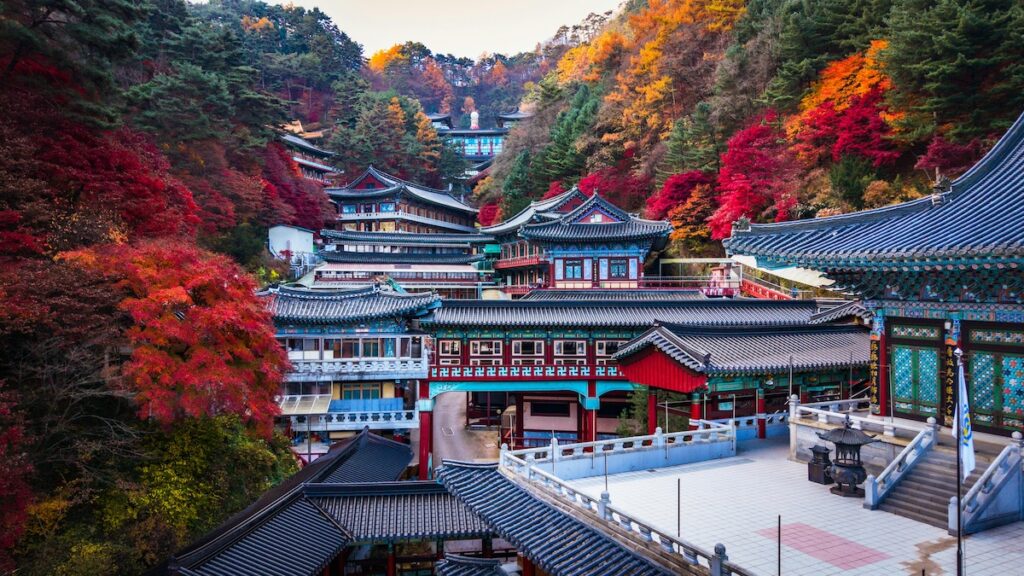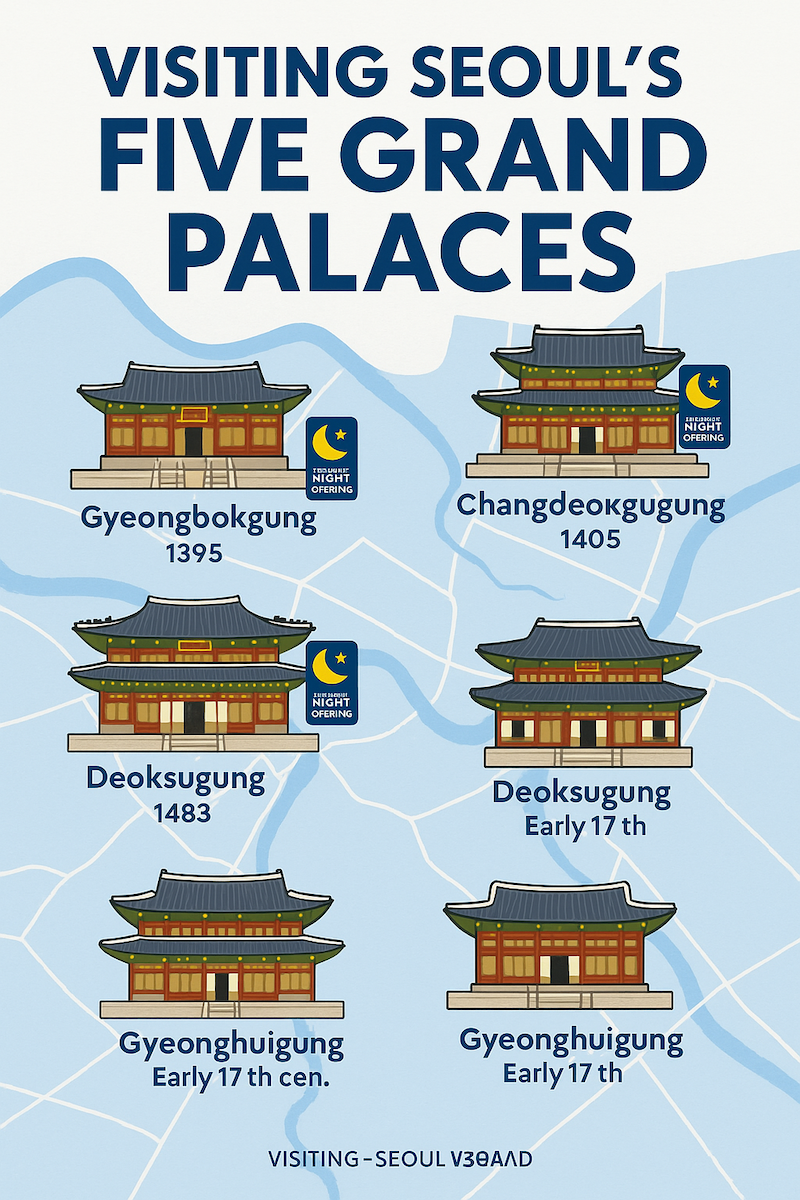✨ Introduction
Have you ever wanted to escape the busy city life, slow down your thoughts, and experience authentic Korean culture?
Templestay is one of the most unique cultural programs in South Korea.
It allows visitors—both locals and foreigners—to stay overnight at a Buddhist temple, join meditation, taste temple food, and learn about Korean Buddhism.
But many first-timers ask:
✅ What exactly is a Templestay?
✅ Which temples are the best for foreigners?
✅ What do you do during a Templestay program?
✅ How much does it cost, and how do you book?
This guide will explain the beauty of Templestay in Korea, introduce popular temples for foreign visitors, and even share a real participant’s interview about their experience.
🧘 1. What is a Templestay?
A Templestay is a cultural program that lets you stay at a Korean Buddhist temple and experience monastic life for a short time.
✅ Typical activities include:
- Meditation (선) → Clear your mind in a serene temple hall
- 108 Bows → A Buddhist practice of mindfulness & gratitude
- Tea Ceremony → Learn the art of Korean temple tea
- Monastic Meal (발우공양) → Vegan temple cuisine eaten mindfully
- Bell-ringing Ceremony → Strike the giant Dharma bell at dawn
- Walking Meditation in Nature
It’s a chance to:
✨ Escape stress
✨ Learn about Korean culture
✨ Disconnect from smartphones & noise
🏯 2. Why Do Foreigners Love Templestay?
- Peaceful Environment → Most temples are in mountains or near forests
- Cultural Immersion → Live like a monk for a day
- Affordable Experience → Usually 50,000–80,000 KRW per night
- English-friendly Programs → Many temples provide English guides
🌏 Interview: Emily from Canada
“I joined a Templestay at Haeinsa Temple, and it completely changed how I see Korea. Waking up at 4:30 AM to the sound of the Dharma bell, eating simple temple food, and meditating in silence was so refreshing. It’s not just about Buddhism—it’s about finding peace in yourself.”

📍 3. Best Temples for Templestay in Korea
Here are the most popular temples for foreigners, all offering English-friendly programs:
🏯 3.1 Jogyesa Temple (조계사) – Right in Seoul
- Location: Central Seoul (near Insadong)
- Why visit: Easy access for travelers, introduction to Korean Buddhism
- Highlights:
✅ Evening lantern lighting
✅ Simple meditation & tea ceremony
✅ Great for first-time visitors
🏯 3.2 Bongeunsa Temple (봉은사) – City Oasis in Gangnam
- Location: Across from COEX Mall, Seoul
- Why visit: Combines modern city life & temple peace
- Highlights:
✅ Half-day Templestay for busy travelers
✅ Stunning night view with lanterns
🏯 3.3 Bulguksa Temple (불국사) – UNESCO World Heritage in Gyeongju
- Location: Gyeongju, the ancient capital
- Why visit: Historical & spiritual experience combined
- Highlights:
✅ Explore ancient stone pagodas
✅ Meditation in a UNESCO-listed site
🏯 3.4 Haeinsa Temple (해인사) – Home of the Tripitaka Koreana
- Location: Hapcheon, near Daegu
- Why visit: One of Korea’s Three Jewel Temples
- Highlights:
✅ See the 800-year-old Buddhist scriptures
✅ Nature walk in Gayasan National Park
🏯 3.5 Beomeosa Temple (범어사) – Gateway to Busan’s Mountains
- Location: Busan
- Why visit: Perfect for combining city & mountain retreat
- Highlights:
✅ Forest walking meditation
✅ Meet local monks
📅 4. What Happens During a Templestay?
Most programs are 1-night, 2-day and include:
Day 1
- Check-in & change into temple clothing
- Orientation about temple etiquette
- Evening chanting & meditation
- Tea ceremony with monks
Day 2
- Wake-up bell at 4:30 AM
- Dawn chanting in the main hall
- 108 prostrations (bows)
- Monastic breakfast (silent meal)
- Walking meditation around the temple grounds
💵 5. How Much Does Templestay Cost?
- Standard 1-night program: 50,000–80,000 KRW (~$40–$60)
- Day program: 20,000–30,000 KRW (~$15–$25)
✅ Includes:
- Simple room (shared or private)
- Vegan temple meals
- Program activities
📲 6. How to Book a Templestay
- Official Templestay website: www.templestay.com
- Choose a temple & program (English available)
- Pay online or on-site
Tip: Book at least 1–2 weeks in advance during spring & autumn (peak season).
✅ 7. Templestay Rules You Should Know
- No loud talking
- No alcohol or smoking
- Respect temple dress code (modest clothing)
- Follow scheduled activities
🛎 8. Who Should Try a Templestay?
✅ Travelers who want a deeper cultural experience
✅ Busy workers needing mental detox
✅ Digital nomads who want to disconnect from screens
✅ Families looking for a peaceful weekend retreat
🌏 More Voices from Visitors
“I stayed at Bulguksa Temple for 2 nights. I didn’t expect to enjoy eating vegan temple food, but it was surprisingly delicious. The silence during meditation felt strange at first, but I left feeling calmer than I’ve ever been.” – Mark, USA
“It was my first time doing 108 bows, and my body hurt, but my mind felt lighter. I realized how much I needed a break from my busy life.” – Anna, Germany
🏔 9. Why Templestay is Special
- It’s not a tourist trap—it’s an authentic cultural experience
- You don’t need to be Buddhist to join
- You get to experience Korea’s spiritual side, beyond K-Pop and shopping
✈️ 10. Travel Tips for Foreigners
✅ Bring a small backpack (temples provide simple clothes)
✅ No need for special skills—just an open mind
✅ Spring & autumn have the best weather for Templestay
✅ If you’re short on time → Try half-day or one-day programs in Seoul
🗂 Quick FAQ
Q: Do I need to be Buddhist to join?
A: No! Anyone can participate regardless of religion.
Q: Can kids join Templestay?
A: Yes, but some programs require children to be over 8 years old.
Q: Do temples provide English guidance?
A: Yes, major temples have English-speaking staff.
Q: Is Wi-Fi available?
A: Usually no—Templestay is about disconnecting from the outside world.
✅ Final Thoughts
Templestay is more than just staying at a temple—it’s a chance to slow down, breathe, and experience a different side of Korean culture.
Whether you join a half-day program in Seoul or a full retreat in the mountains, you’ll leave with a clearer mind and a deeper appreciation of Korea’s heritage.
So next time you visit Korea, take a break from the busy city and spend a night at a temple. It might be the most memorable part of your trip.

